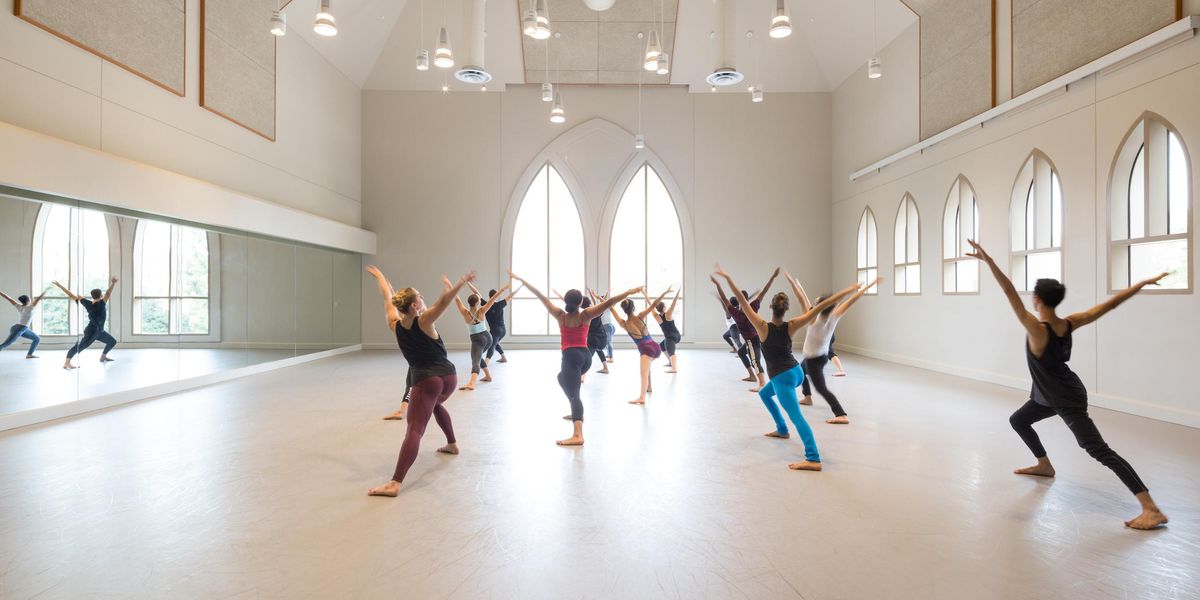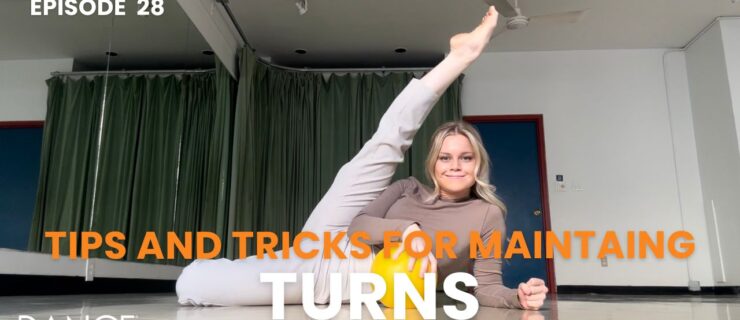Plugged In
Doris Humphrey and dancers, 1941. Photos by Hans Knopf, collection of Charles H. Woodford.
Books
The Bennington School of the Dance: A History in Writings and Interviews
Compiled and edited by Elizabeth McPherson. McFarland & Company. 2013. 340 pages, photographs. Paperback. $45.
We take for granted that Martha Graham is a world-renowned name. But if it weren’t for the Bennington School of the Dance, the whole project of American modern dance might not have blossomed when it did.
From 1934 to 1942, Graham, Doris Humphrey, Charles Weidman, and Hanya Holm gathered at Bennington College in Vermont during the summer to create dances and teach avid students from all over the country. The mastermind of this busy haven was Martha Hill, who was already on faculty at the college (and later started the dance programs at NYU and Juilliard). Because it brought together the strongest figures in modern dance (though major people like Katherine Dunham and Helen Tamiris were left out), Louis Horst called it the “dance center of the world.” It could also be called the mother of all summer intensives. In fact, it was the precursor to the American Dance Festival, which just celebrated its 80th year.
Graham premiered enduring works like American Document and Letter to the World there; Humphrey made New Dance and With My Red Fires. José Limón became a dancer to watch, and Merce Cunningham was snapped up by Graham. People had fierce loyalties to either Graham or Humphrey, but they partied together, “dancing like mad.”
Elizabeth McPherson’s goal in this book was to bring the legend of the Bennington School of the Dance “down to earth by letting the participants…tell the story themselves.” She had discovered a trove of oral interviews and reports that were not available to previous Bennington scholar Sali Ann Kriegsman (whose large-format Modern Dance in America: The Bennington Years was published in 1981). We hear from Bessie Schönberg, Sybil Shearer, Sophie Maslow, May O’Donnell, and many more. Although there are repetitions and some tedious detail, the book is invaluable for its diverse points of view. For instance, Ann Hutchinson Guest wrote that she shifted her interest from Hanya Holm’s German-influenced, flowing manner to Graham’s “resisting energy,” whereas Anna Halprin found Graham’s approach “dogmatic.”
Above: Dancing on Commons Lawn, 1934
According to McPherson, all present had a “zealous commitment” to the “cause” of modern dance. The students, many of whom taught in phys ed departments, went home changed. As teachers, presenters, and patrons, they planted the seeds that would make this American art form thrive.
The photos are as eye-opening as the text. In striking formations, women who are both rooted and ecstatic dance their hearts out on Commons Lawn. The first year, when they were required to wear “flesh-colored” leotards, the townspeople looked through binoculars and concluded that the summer school on the hill was a nudist colony.
—Wendy Perron
Live Stream
What factors come into play when mounting a major revival? American Ballet Theatre devotes a Works & Process at the Guggenheim program to exploring this question. The evening, which will be live-streamed at www.guggenheim.org on Oct. 20 or 21, will examine Fokine’s ethereal Les Sylphides (originally titled Chopiniana [1908]) and Tharp’s Bach Partita (1983) ahead of their performances as part of the company’s fall season at Lincoln Center (Oct. 30–Nov. 10). —Kina Poon
iPad App
Designed, choreographed, and scored specially for the tablet, the new app Dot Dot Dot offers the user an interactive experience. A grid of nine dots forms the basic template. Tom Gold, director of Tom Gold Dance and former soloist with New York City Ballet, is the dancer under your direction. A swipe of your finger sends him towards another dot, shifts the landscape from bird’s-eye view to audience level to onstage—and the dots to columns—or changes the movement sequence. (You can also conjure multiple Toms to dance at once.) The app, produced by Patsy Tarr and designed by Abbott Miller of Pentagram, is the third dance app for the iPad by 2wice Arts Foundation. 99 cents. —Jay Oatis
Cinema
While the Bolshoi has been plagued by scandal and intrigue, the company dances on. Via Ballet in Cinema, viewers will get the chance to see four Bolshoi performances broadcast live to over 300 screens in North America this season, kicking off with Grigorovich’s Spartacus (the epitome of Bolshoi bravura) on Oct. 20. See www.balletincinema.com to find a theater near you. —K. P.




